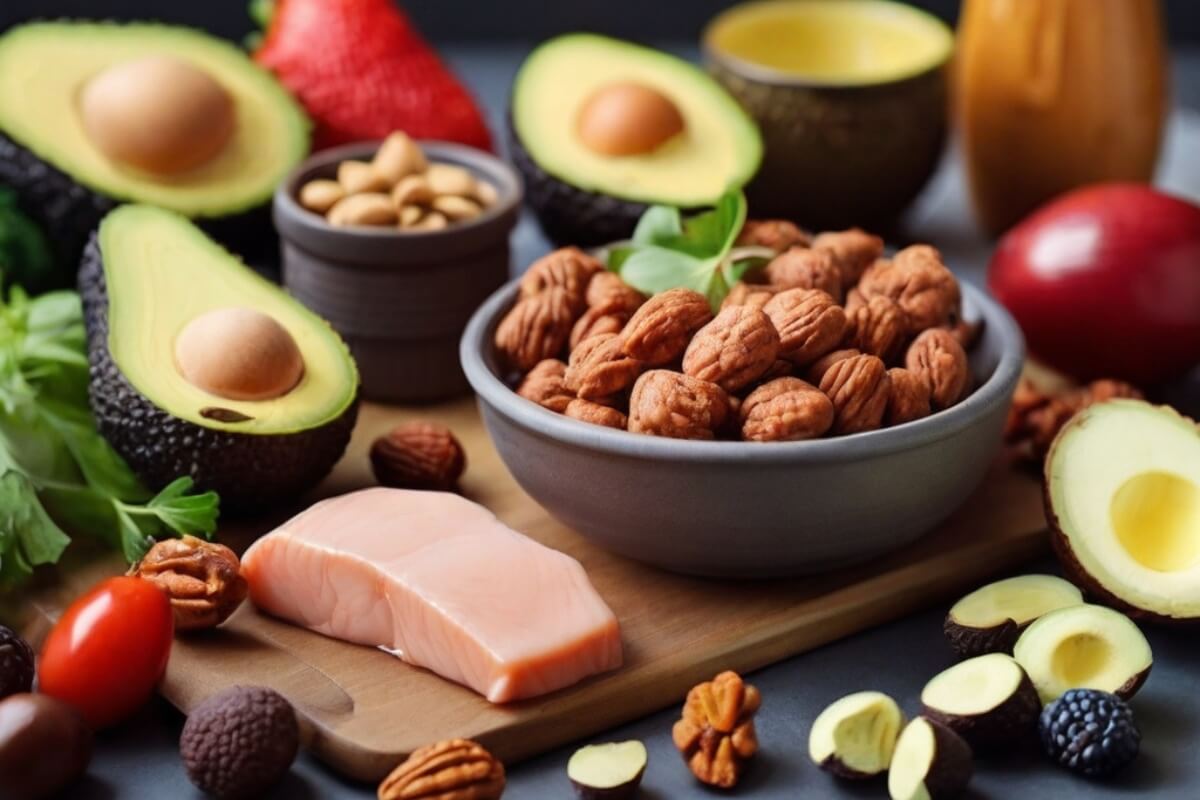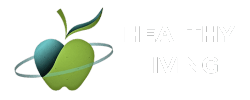Are you looking for a way to lose weight, improve your health, and feel more energetic? If so, you may have heard of the keto diet, a popular low-carb, high-fat eating plan that has many benefits. But how do you start a keto diet? What are the rules, the foods, and the tips to succeed? In this article, we will give you a complete guide on how to start a keto diet in 7 easy steps. Let’s get started!
What is a keto diet?
A keto diet is a way of eating that limits the intake of carbohydrates, and replaces them with fat. By doing this, your body enters a state called ketosis, where it burns fat for fuel instead of glucose. This can lead to weight loss, lower blood sugar, improved brain function, and many other benefits.
Why start a keto diet?

There are many reasons why people start a keto diet. Some of the most common ones are:
- To lose weight. A keto diet can help you lose weight faster and more effectively than other diets, by suppressing your appetite, boosting your metabolism, and reducing your insulin levels.
- To improve your health. A keto diet can help you lower your risk of diabetes, heart disease, cancer, Alzheimer’s, and other chronic diseases, by reducing inflammation, oxidative stress, and insulin resistance.
- To feel better. A keto diet can help you improve your mood, energy, mental clarity, and sleep quality, by balancing your hormones, neurotransmitters, and electrolytes.
How to start a keto diet?
Starting a keto diet may seem daunting, but it is actually quite simple. Here are the 7 steps you need to follow:
Step 1: Calculate your macros
The first step to start a keto diet is to calculate your macros, which are the amounts of carbs, protein, and fat you need to eat every day. To do this, you can use an online keto calculator, such as this one. You will need to enter your age, gender, height, weight, activity level, and goal (weight loss, maintenance, or gain). The calculator will then give you your recommended macros, in grams and percentages.
For example, if you are a 30-year-old woman, who is 5’4″ tall, weighs 150 lbs, and wants to lose weight, your macros may look something like this:
- Carbs: 25 grams (5% of calories)
- Protein: 75 grams (15% of calories)
- Fat: 111 grams (80% of calories)
- Total calories: 1,250
These numbers are just an estimate, and you may need to adjust them according to your results and preferences. The most important thing is to keep your carbs low, your protein moderate, and your fat high.
Step 2: Plan your meals
The next step to start a keto diet is to plan your meals, based on your macros and your food preferences. You can use a keto meal planner, such as this one, to get some ideas and recipes. You can also create your own meals, as long as they fit your macros and are keto-friendly.
Some general tips to plan your meals are:
- Choose low-carb, high-fiber vegetables, such as leafy greens, broccoli, cauliflower, zucchini, cabbage, etc.
- Choose high-quality, grass-fed, organic, or wild-caught protein sources, such as eggs, meat, poultry, fish, seafood, etc.
- Choose healthy, natural, and unprocessed fats, such as butter, ghee, coconut oil, olive oil, avocado, nuts, seeds, etc.
- Avoid high-carb, processed, and inflammatory foods, such as grains, legumes, sugar, fruits, vegetable oils, trans fats, etc.
- Drink plenty of water, and limit your intake of alcohol, caffeine, and artificial sweeteners.
Step 3: Stock your pantry
The third step to start a keto diet is to stock your pantry with keto-friendly foods and ingredients, and get rid of any non-keto foods that may tempt you. This will make it easier for you to stick to your plan and avoid cravings. Some of the keto essentials you may want to have in your pantry are:
- Low-carb flours, such as almond flour, coconut flour, flaxseed meal, etc.
- Low-carb sweeteners, such as stevia, erythritol, monk fruit, etc.
- Low-carb snacks, such as nuts, seeds, cheese, jerky, olives, pickles, etc.
- Low-carb condiments, such as mayonnaise, mustard, ketchup, salsa, hot sauce, etc.
- Low-carb sauces, such as pesto, alfredo, marinara, etc.
- Low-carb baking ingredients, such as baking powder, baking soda, vanilla extract, etc.
Step 4: Track your progress
The fourth step to start a keto diet is to track your progress, by measuring your weight, body fat, ketones, blood sugar, and other markers. This will help you see how the keto diet is working for you, and if you need to make any changes or adjustments. You can use a keto tracker, such as this one, to log your food intake, macros, and metrics. You can also use a scale, a tape measure, a ketone meter, a glucose meter, and a camera to monitor your results.
Some general tips to track your progress are:
- Weigh yourself once a week, in the morning, before eating or drinking anything, and wearing the same clothes.
- Measure your body fat percentage once a month, using a caliper, a bioelectrical impedance device, or a DEXA scan.
- Measure your ketones once a day, using a blood, breath, or urine ketone meter. Aim for a range of 0.5 to 3.0 mmol/L, which indicates optimal ketosis.
- Measure your blood sugar once a day, using a glucose meter. Aim for a range of 70 to 100 mg/dL, which indicates good blood sugar control.
- Take a picture of yourself once a month, wearing the same clothes and in the same pose and lighting. This will help you see the changes in your body shape and composition.
Step 5: Manage your side effects
The fifth step to start a keto diet is to manage your side effects, if you experience any. Some people may have no or minimal side effects, while others may have some temporary discomforts, such as:
- Keto flu: This is a common term for the symptoms that may occur when your body is adapting to ketosis, such as headache, fatigue, nausea, dizziness, etc. It usually lasts for a few days or weeks, and can be prevented or alleviated by staying hydrated, replenishing your electrolytes, and eating enough fat and calories.
- Keto breath: This is a result of the increased production of acetone, a type of ketone, that may give your breath a fruity or metallic smell. It usually goes away after a few weeks, and can be masked by brushing your teeth, chewing sugar-free gum, or using mouthwash.
- Keto rash: This is a rare condition that may cause a red, itchy rash on your skin, especially on your chest, back, or neck. It is not clear what causes it, but it may be related to ketones, inflammation, or allergies. It usually resolves on its own, or with the help of antihistamines, corticosteroids, or antibiotics.
- Constipation: This is a common issue that may occur due to the reduced intake of fiber, water, and magnesium on a keto diet. It can be prevented or relieved by increasing your intake of these nutrients, as well as taking probiotics, psyllium husk, or laxatives.
Step 6: Supplement your diet
The sixth step to start a keto diet is to supplement your diet, if needed. While a keto diet can provide most of the nutrients you need, you may still benefit from taking some supplements, especially if you have any deficiencies, health conditions, or special needs. Some of the supplements you may want to consider are:
- Electrolytes: These are minerals that are essential for your fluid balance, nerve function, muscle contraction, and heart rhythm. They include sodium, potassium, magnesium, and calcium. You may need to supplement them on a keto diet, as you may lose them through urine, sweat, or diarrhea. You can take them in the form of tablets, capsules, powders, or liquids, or get them from foods such as salt, broth, avocados, nuts, seeds, leafy greens, etc.
- MCT oil: This is a type of fat that is easily converted into ketones, and can provide you with instant energy, appetite suppression, and cognitive enhancement. You can take it in the form of oil, powder, or capsules, or add it to your coffee, smoothies, salads, etc. Start with a small dose, such as 1 teaspoon, and gradually increase it to avoid digestive issues.
- Omega-3 fatty acids: These are essential fats that have anti-inflammatory, brain-protective, and heart-healthy effects. You may need to supplement them on a keto diet, as you may not get enough from your food sources, especially if you don’t eat much fish, seafood, or grass-fed meat. You can take them in the form of fish oil, krill oil, algae oil, or capsules, or get them from foods such as salmon, sardines, mackerel, flaxseeds, chia seeds, walnuts, etc.
- Vitamin D: This is a vital hormone that regulates your immune system, bone health, mood, and many other functions. You may need to supplement it on a keto diet, as you may not get enough from your food sources, especially if you don’t eat much dairy, eggs, or mushrooms, or if you don’t get enough sun exposure. You can take it in the form of drops, capsules, or tablets, or get it from foods such as cod liver oil, fatty fish, egg yolks, cheese, etc.
- Fiber: This is a type of carbohydrate that is not digested by your body, but helps your digestion, bowel movements, blood sugar, cholesterol, and gut health. You may need to supplement it on a keto diet, as you may not get enough from your food sources, especially if you don’t eat enough vegetables, fruits, nuts, seeds, or legumes. You can take it in the form of psyllium husk, flaxseed meal, chia seeds, or capsules, or get it from foods such as avocados, broccoli, berries, almonds, etc.
Step 7: Enjoy your keto lifestyle
The seventh and final step to start a keto diet is to enjoy your keto lifestyle, and reap the benefits of your hard work. A keto diet is not a short-term fix, but a long-term change that can improve your health, weight, and well-being. However, this does not mean that you have to be strict and rigid all the time. You can also have some flexibility and fun, by:
- Experimenting with new recipes, ingredients, and cuisines, and discovering new flavors and textures.
- Treating yourself with some keto-friendly desserts, snacks, and drinks, and satisfying your sweet tooth without guilt.
- Having some cheat meals or days, and indulging in some of your favorite non-keto foods, as long as you don’t overdo it and get back on track afterwards.
- Joining a keto community, and finding support, inspiration, and motivation from other ketoers, online or offline.
Conclusion
Starting a keto diet may seem challenging, but it is actually quite simple and rewarding. By following these 7 steps, you can start a keto diet in no time, and enjoy the benefits of a low-carb, high-fat eating plan. Remember, a keto diet is not a one-size-fits-all solution, but a personalized and adaptable approach that can suit your needs and goals. So, what are you waiting for? Start your keto journey today, and see the difference for yourself!
We hope you found this article helpful and informative. If you have any questions, comments, or suggestions, please leave them below. We would love to hear from you!
We hope this article has been useful and informative for you. Leave your comment below and follow us on facebook and pinterest for more tips
